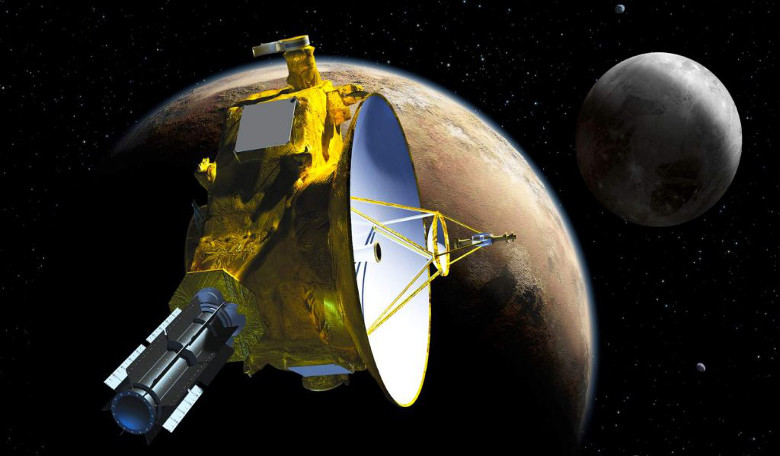Following a nearly six-month slumber, NASA’s New Horizons probe has woken up to get ready to meet its new target – a Kuiper belt object whose new nickname literally translates as ‘a distant place beyond the known world’.
After whizzing by Pluto nearly three years ago, New Horizons was set forth on an extended mission to study the Kuiper belt environment by observing numerous Kuiper Belt Objects (KBOs) and Centaurs in unique ways.
Its first target is KBO 486958 2014 MU69, an icy object that may have at least one moon or could be a system of multiple objects. 2014 MU69 has been nicknamed Ultima Thule after a mythical, far northern island – Thule – mentioned in ancient Greek and Roman literature to describe “the place located furthest north.”
The name is befitting of its new target as Ultima Thule orbits a billion miles beyond Pluto, making it the farthest planetary encounter in history and the most primitive world ever observed by a spacecraft.
“Our spacecraft is heading beyond the limits of the known worlds, to what will be this mission’s next achievement,” said Alan Stern, New Horizons principal investigator from Southwest Research Institute in Boulder, Colorado. “Since this will be the farthest exploration of any object in space in history, I like to call our flyby target Ultima, for short, symbolising this ultimate exploration by NASA and our team.”
Now that New Horizons has signalled Earth to let us know it is alive and well, over the next two months, ground controllers will uplink commands to the spacecraft to prepare it for an encounter with Ultima on 1 January, 2019.
“Our team is already deep into planning and simulations of our upcoming flyby of Ultima Thule and excited that New Horizons is now back in an active state to ready the bird for flyby operations, which will begin in late August,” said Stern.
New Horizons gave scientists an unprecedented look at Pluto to reveal vast mountain ranges and evidence for cryovolcanism, as well as suggesting that the dwarf planet could be one giant comet.
If Ultima has existed at a temperature of –240° Celsius near its current orbit 6.5 billion kilometres from Earth, for most of the solar system’s 4.6-billion-year history like scientists suspect it has, then any data provided by New Horizons could help establish how our Solar System formed and evolved over billions of years.











